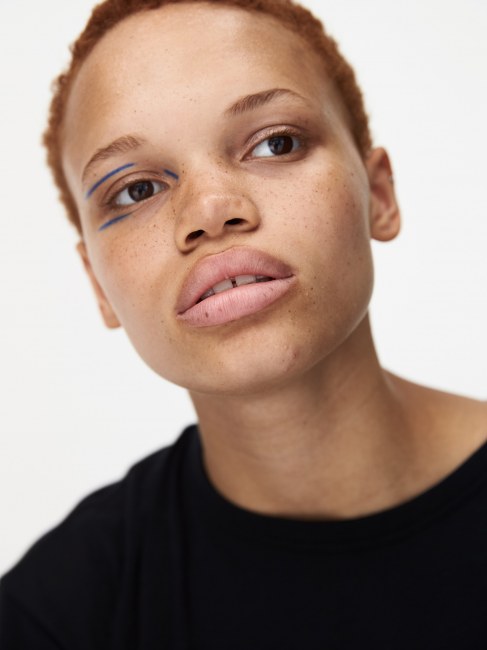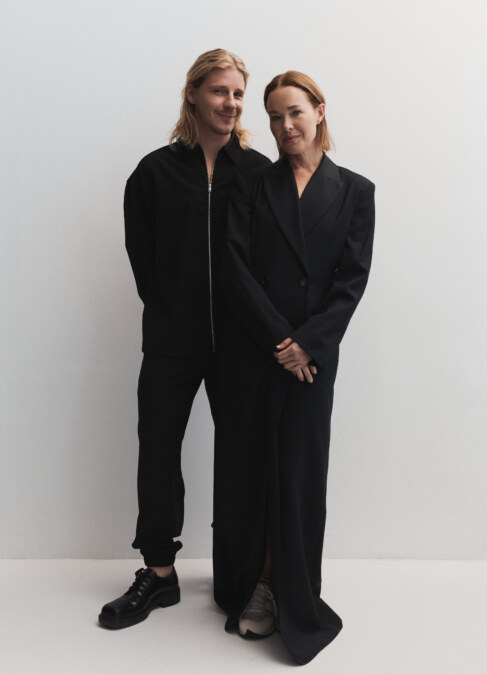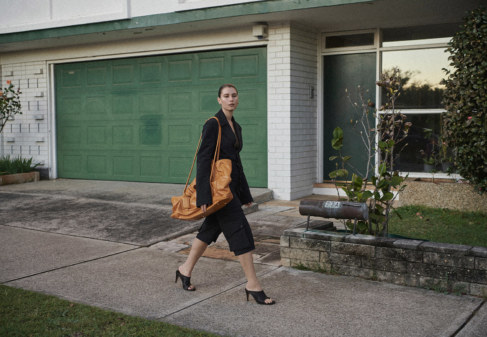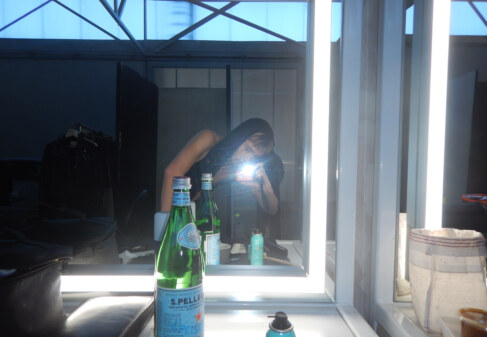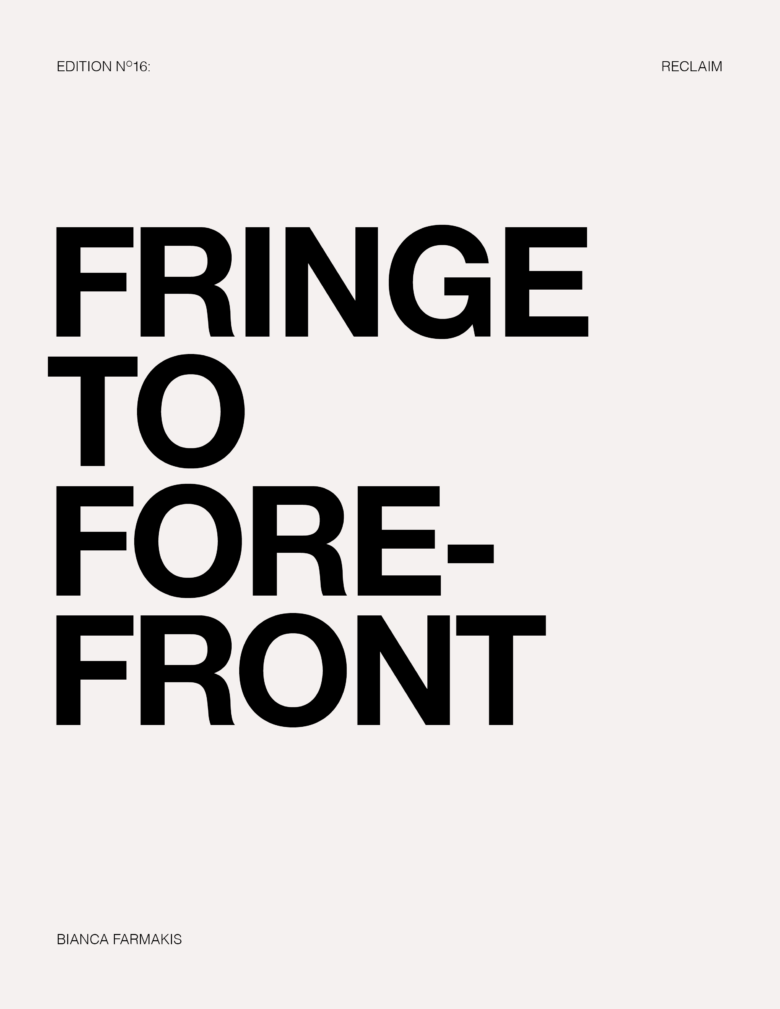
FRINGE TO FOREFRONT BY BIANCA FARMAKIS
WORDS: BIANCA FARMAKIS
I turned twenty-five this year in an abandoned stadium drenched in crimson lights. A cocktail of music, art installations and a self-made margarita mix ignited my senses. People I hadn’t seen in years became best friends on the dance floor in an instant. Walls were slathered in extravagant black strokes chronicling memories that would endure the years to come.
So when we began conceptualising a shoot for Celine, a brand that has sought out to stoke creativity and capture the essence of youth through the ages, we thought no place seemed better than the apex of culture burrowing well underground, on the fringes of Sydney’s nightlife.
A lot has been said about the underground scene – the aesthetics that it bore over decades, the moments that scandalised society, the ways it has moulded to fit a new realm of ravers. In a time spent between lockouts and lockdowns over the past few years, the beauty of community, creativity and culture mingling off the grid has faced it’s series of challenges. Thus, we looked for a way to convey the ways these ideals fuse together among the next generation of creatives hoping to hone their craft, collaborate with like-minded people, or find themselves and new friends in a dark space free from the gaze of conventional expectations.
This story began as an expression of youth culture. It became a love letter to the artists and the attendees that have reclaimed a space for individuality to flourish on their own terms.
Every generation has something to say about the one that emerges after it – be it intrigue, snark or most often, confusion. Too often, it tries to compartmentalise individuals into an identifiable category: an age group, a birth year, a letter.
Those who deviate from the mainstream are submerged in the underground, glimpses of their existence captured in grainy images, or think-pieces put together by an omniscient narrator.
But in the advent of social media, and the democratisation of public platforms, young creatives have shone light on the importance of reclaiming their voice, as the next generation constructs their own narrative as it occurs.
The underground scene has been a pivotal fixture in directing the cultural consensus, crafting the next iteration of art, music and fashion in the late hours of the evening, for the rest of the world to wake up to.
In current times, it can be perceived as facing a crisis: with such a high standard of creativity set over the past few decades what space is there left to claim in the next iteration of originality?
“There are thoughts and ideas you have, surrounded by like-minded people late at night you don’t get otherwise – new ideas, new realms, new subcultures, new collaborations,” answers Sydney-based DJ Andy Garvey, who has helmed a number of music crews curating nightlife and building a space for creatives and partiers alike to flourish.
“That’s never not going to be important, but it is different with new generations coming up.”
Building a community, notably, has faced a complex relationship in the past five years. Though we’re more connected than ever digitally, after years spent in isolation, we became fractured physically.
Prior to lockdown came lockout – a series of Sydney laws that restricted nightlife resonated globally. Overnight, club lights turned on earlier, local venues shut completely and the nightscape changed almost permanently, with rippling impacts on the creativity that accompanied it.
“When the lockouts came in I had just started my first DJ residency playing b2b with Johnny Lieu every Friday at the Imperial in Erskineville. It felt like a foundational point for our careers,” Garvey reflects.
“Then police raids happened and everything shut off. In that instant, so many places started struggling,” she says.
Garvey, who has carved out a cult following in the underground rave scene, through her collective Pure Space, said the push was an “instigator for the demise” of nightlife.
“We were forced underground, I didn’t set out to use unconventional spaces,” she says.
“But it was the only option at that time, we had to adapt to find a way to keep doing what we loved – and that was bringing people together and having a space to express ourselves.”
Ironically, while the underground scene always existed, harsh laws allowed it to flourish. Warehouse spaces became packed, secret locations were sent more frequently, once abandoned venues became havens for expression.
A portrait of the unsanctioned rave in the mainstream, painted it as demonic, operating on a fringe of society as a blaring form of rebellion to order and structure.
It’s a sentiment echoed by fellow DJ and creative director of culture magazine Soft Stir, Alex Stevenson.
The publication, that documents creative culture by galvanising emerging artists across disciplines to discuss a unifying theme, recognises the future of creativity relies on nurturing a community of artists to fuse a future of creativity.
“So many pockets of creatives weren’t intermingling together, so we built a space for collaboration,” she explains, detailing the birth of the annual print publication.
The editor of Soft Stir, Chloe Hayman, adds, “writers, people across different intersections and disciplines were at opposite ends of the creative scene and never had opportunities to meet.”
“When I think about the world and what makes good creativity, it’s people from all disciplines coming together and looking outside their own echo chambers,” she adds.
Hayman says a push toward the underground was more a means of reclaiming an opportunity to collaborate, creatively and within a sense of community, fostered outside of the culture of surveillance and the rigidness of society.
“Forward thinking ideas happen away from the traditional institution – that has not often been an open opportunity,” she explains.
“No one person or one collective is ever going to be the single voice on culture, but to have a body of work that has so many people, disciplines and experiences, offers a richer view than any sort of singular idea.”
While social media has proved a space for connection, the ferocity of the scroll has exacerbated the capacity of meaningful moments to disappear at the speed of a single click.
Stevenson says the space Soft Stir has carved out, as an annual publication, is a means of resistance, a moment to reclaim reflectiveness, with curated pieces fusing multiple disciplines on subjects that stand the test of the newsfeed-dominated times.
“It’s about reclaiming the ability to just sit with a piece, take it in, understand and comprehend,” she says.
Hayman adds, “wherever [that person] is, you can consume the beauty of what so many people who don’t fit into mainstream media create. And that doesn’t necessarily like disappear with a click.”
SN: What does it mean to create spaces entirely outside the mainstream?
GARVEY: “It enhances the magic of being out in the world. It takes back what we’re rarely told we’ve got inside – individuality, and community – all at the same time.”
___
SIDE-NOTE acknowledges the Eora people as the traditional custodians of the land on which this project was produced. We pay our respects to Elders past and present. We extend that respect to Aboriginal and Torres Strait Islander peoples reading this.
